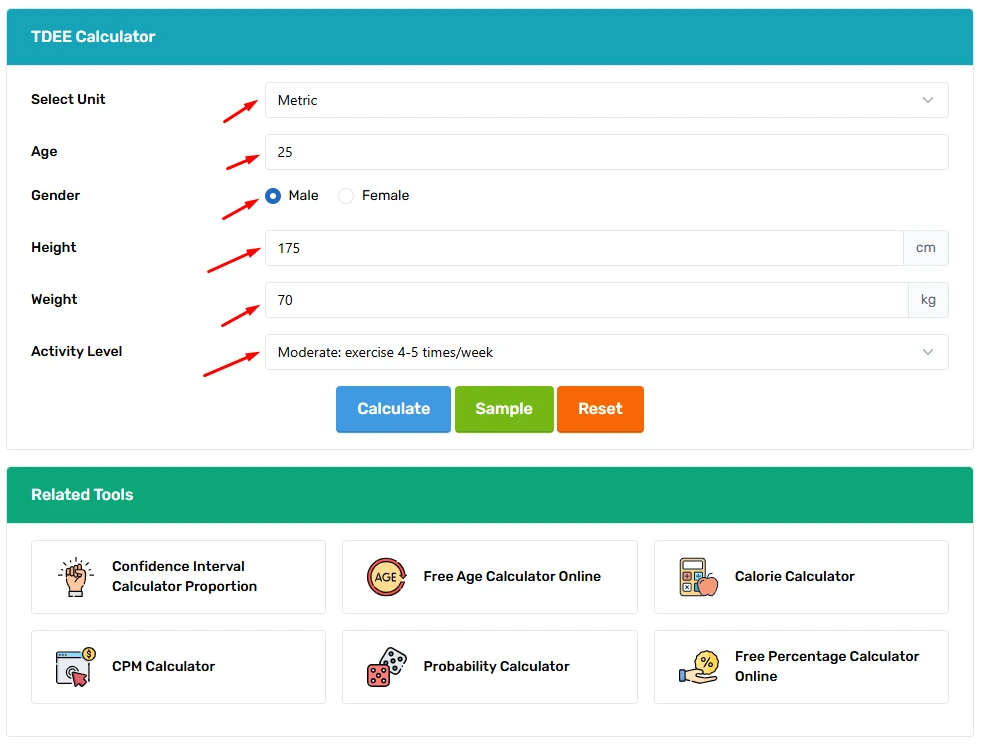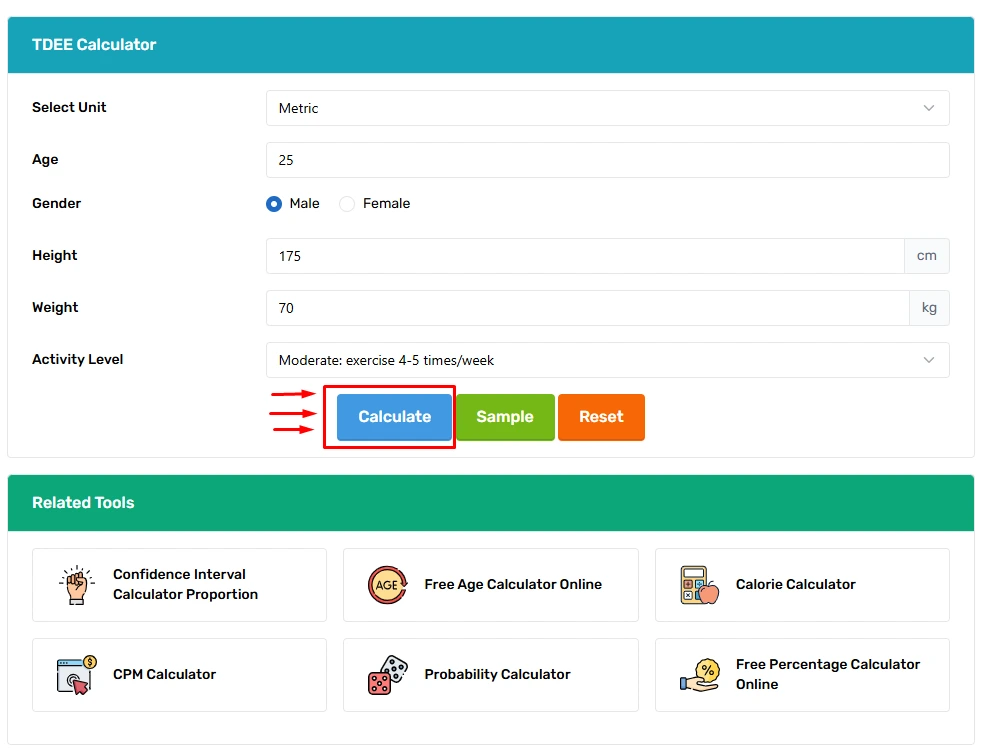TDEE Calculator
What is TDEE?
TDEE stands for total daily energy expenditure. It means the total energy one person takes each day to maintain their current weight. This metric is calculated keeping in mind three things: basal metabolic rate, activity level, thermic effect of food.
Though it is hard to measure the total daily energy expenditure accurately, still it can be done by keeping in mind those things.
1. Basal Metabolic Rate
Also known as BMR, it means the amount of calories your body needs while you are at rest to maintain basic body functions. These are essential psychological processes like breathing, circulation and cell regeneration. However, this is based on your age, gender, height and weight.
2. Activity Level
This means, the calories that are burned through various forms of activities like exercising, fat burning. This helps in maintaining a very active energy consumption. However, the more your move, the more energy it takes to maintain its baseline.
3. Thermic Effect of Food
Thermic effect of food means the energy you need to digest your food, absorbs and metabolises nutrients of that food. We have 3 macronutrients: carbs, proteins and fats.
Different types of macronutrients need different amounts of energy. Usually, proteins require the most energy, then carbohydrates and then fats.
How to Calculate TDEE with TrueSuggests TDEE Calculator?
To calculate your TDEE, you will need to follow this simple steps:
1. After landing the website, you will see a lot of selection boxes.

2. Select and enter the data like this:

3. Then click “Calculate”.

4. You will see your result like this:

How is TDEE Calculated?
To calculate TDEE, you need a working formula. There are several formulas like Mifflin St-Jeor equation, Harris-Benedict equation, and Katch-McArdle formula but the one we are using is The Mifflin-St Jeor equation. This equation or formula is approved by the American Council on Exercise (ACE). The formula is:
For men:
10 x weight (kg) + 6.25 x height (cm) – 5 x age (y) + 5 (kcal / day)
For women:
10 x weight (kg) + 6.25 x height (cm) – 5 x age (y) -161 (kcal / day)
The equation finds the BMR or basal metabolic rate. When you have found the BMR, you need to multiply it with activity level. There are 5 activity levels. They are:
- Sedentary = 1.2
- Lightly active = 1.375
- Moderately active = 1.550
- Very active = 1.725
- Extra active = 1.9
This is how you find the TDEE.
Why TDEE Matters with Weight?
It is very important to know how much you need to take a day to maintain weight. If you don't calculate TDEE, you may lose weight but not in your estimated time. To keep in balance with the time and effort you need to keep track of your calories
Can You Increase Your TDEE?
Yes, you can increase your TDEE if you consider these things.
1. Exercising
When you do physical activity like going to gym, doing regular work, working in the garden, it can increase your TDEE. These kinds of exercises help you a lot in creating higher BMR and thus contribute to the TDEE.
2. Eating Nutrition Foods
Another way to increase your TDEE is by eating nutritious foods and counting them. Understand your daily food pattern and then you keep track of it. Then you can see your BMR increasing. Foods like whole grains, fruits, vegetables, seeds can help you in this process.
Difference Between TDEE and BMI?
BMI means body mass index. It helps you keep track of your weight. On the other hand, TDEE does not measure that. It doesn't keep track of your weight range, it only helps those who want to gain or lose weight.
FAQ
What is the Best TDEE Calculator?
Of course, TrueSuggests TDEE calculator is the best calculator out there. It gives you the option to choose your weight, height in metric or US Imperial. So you don't have to think about converting weight, height into other formats from other websites.
How Do You Use Your TDEE to Lose Weight?
By using TDEE, you can keep track of your progress. And by keeping track of your progress, you can overview how everything is going. Then you can increase or decrease exercise or physical work according to the result.
How Often Should I Recalculate My TDEE?
You can do it every few months. Also whenever you feel you have gone through a drastic change, you can recalculate it.
.png)





